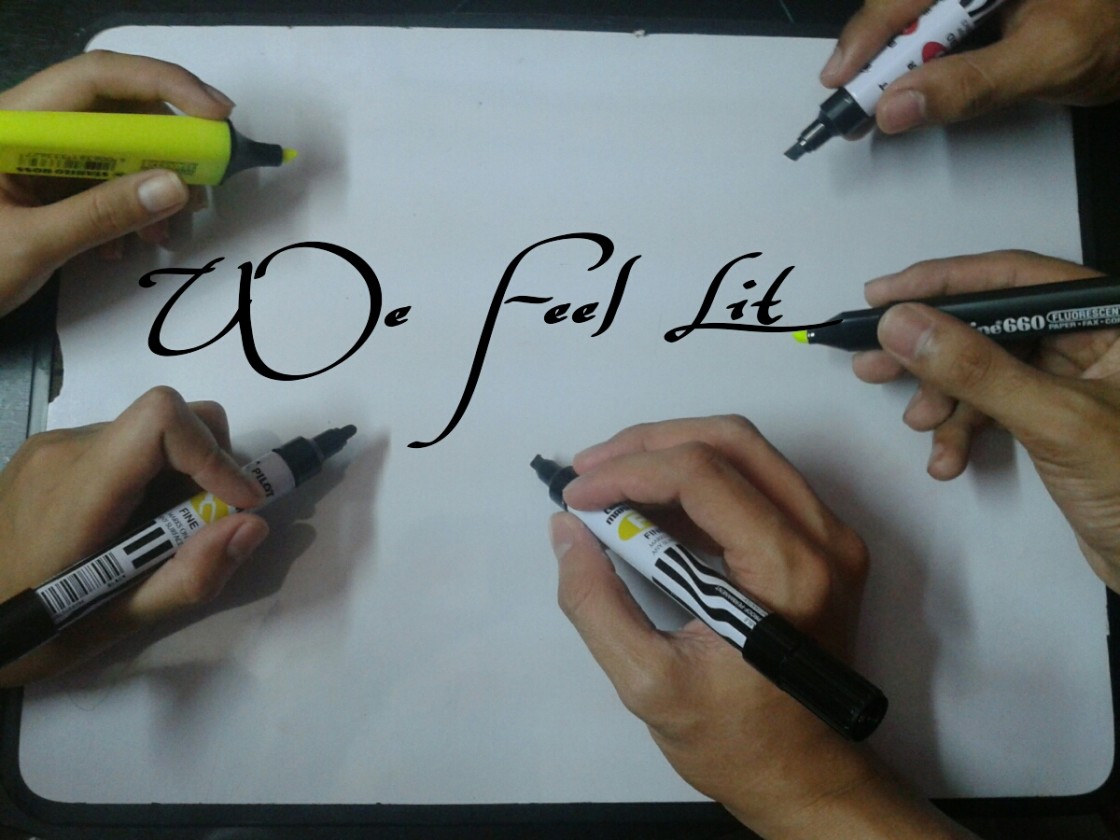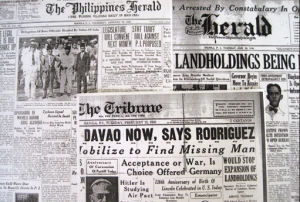| “To achieve lasting literature, fictional or factual, a writer needs perceptive vision, absorptive capacity, and creative strength.” – Lawrence Clark Powell |

| “To achieve lasting literature, fictional or factual, a writer needs perceptive vision, absorptive capacity, and creative strength.” – Lawrence Clark Powell |
Well, since all that is “in-the-buzz” now are Twitter.com, Facebook.com, Youtube.com, Tumblr.com and a bunch of other internet flashies we all know as SNS or Social Networking Sites, I’ve decided (actually, there’s five of us in the group but we’ve decided to work on this blog using a single imaginary writer that would pretty much be like the five of us in one persona, and using “I” in a blog is more appealing) to make a blog in honor of one of the most valuable treasures this archipelago could ever have, that is, (drum roll please) – Philippine Literature.
I’m about to tackle wondrous facts about the P-Lit (short for Philippine Literature) during the American Colonization Era. So fasten your seat belts, hold on tight and enjoy the ride (which by the way will be inside your minds because this is just a blog and what you read will be recreated visually inside your heads.) There will also be relevant and important quick questions which will appear occasionally during the course of our discussion. Of course those questions will be answered with the best answer I could provide (or find).
First, a very brief glimpse of history.
After the 300-year domination of Spain here in the Philippines (but seriously their rule isn’t 100% bad), the Americans took over through their victory at the Spanish-American War that took place on April 1898. To cut the very long story short, we bid goodbye to the Españols and said hello to the Americanos.
And just like how the Spaniards molded (or remolded) our ways and culture, the Americans also bestowed influences of their own, particularly in Education.
Q: What exactly are you talking about when you said education? And why was it one of the aspects that the Americans wanted to ponder on?
A: Since many of us that time have been brainwashed by the Spanish culture, language is a barrier between the Americans and the Philippines. So they focused on education to teach Filipinos their mother tongue that is the English language by using it as the medium of instruction in educational institutions . Another great accomplishment on education is the establishing of free public schools. (Ye hey to the Americans)
And the use of English as the medium of instruction led way to the booming of the glorious heritage of Philippine Literature in English.
Let us start off with what we call as the Period of Apprenticeship or Imitation. This period lasts from 1910 to 1935. In this time, most Filipino writers imitated the writing styles and techniques of English and American writers as a direct result of American colonization in our nation.
Q: Why is there a need for Filipino writers to imitate?
A: Of course, that is not intentional, for scholars, this fact of imitation is not surprising at all because most of the writers in this period graduated or studied at institutions with literary education bounded with American and English authors. Therefore, these students express their writing techniques just like how American and English authors do like Ernest Hemingway, Sherwood Anderson etc.
After it was founded on 1908, The University of the Philippines became the center of literary effort because of the birth of the first issue of UP Folio. This was the early embodiment of Filipino attempts for self-expression in English. Afterwards, the UP Folio was replaced by the Philippine Collegian which gave rise to other publications in English such as Independent, Rising Philippines and Philippine Review.
On 1920, The Philippine Herald, the country’s first ever Filipino daily paper in English, was born.
Q: Any trivia about the Herald?
A: I dunno if this one’s a trivia but I like to give it a try. The Philippine Herald pays the writer whose literary work is published in any of its issue. Some sort of financial reward for the writer’s hard work. (and some sort of motivation too)
Literature was also being boosts by literary competitions. Pioneer to this contests was the Philippine Free Press which offers short story-writing contests because this was the genre that Filipinos favors the most at this time.
In 1925, a milestone of Filipino writing in English took place through the publishing of “Dead Stars”, a short story by Paz Marques Benitez. Benitez’s colleagues reffered to her work as superior among all the short stories published during that period. This published work gave way to the maturity era of Philippine literature in English. At this time, various writings were produced. Writings that no longer embraces any imitative attributes. (one big leap for the literary community)
*if you want to read “Dead Stars” (which is recommended because it is a great short story) by Paz Marques Benitez, feel free to click this link: http://notes.dlszobel.edu.ph/files/2013-2014/DEAD%20STARS.pdf
Two years after, the Philippine Free Press released the first anthology of Filipino short stories written in English that showcases the depth of Filipino imagination; from romantic tales to legendary figures to stories with the similar plot with that of an American and other foreign stories. (we still can’t get enough of imitations, do we?)
Poetry, of course, also flourished during the early years of the apprenticeship period. The first ever Filipino poem in English is the “Sursum Surda” which circulated in the Philippine Free Press on 1907.
“Thinking of Ourselves” is the first ever notable collection of Filipino essays in English which was edited and compiled by Vicente M. Hilario and Eliseo M. Quirino on 1924. The essays showcased in this collection dealt with Philippine traditions and history, religion, philosophy, ethics, literature and the arts, politics and government, and other significant matters on Filipino life and culture.
Q: Why do they focus on such things?
A: You should be happy they do so. This only means that Filipino writers this time were not anymore imitating other nations’ writing styles and topic. Instead they stick to the locals.
Sentimental was the theme of the early novel during this period. The first ever Philippine novel in English, made by Zolio M. Galang, is the “Child of Sorrow” which was published in 1924.
Q: Why did you say sentimental?
A: Because the cultural basis of literature was too thin to support a sustained and complex tradition necessary for a novel.
In 1936, the Philippine Writers League was established letting Filipino writers discuss how significant is literature in the society. The PWL was led by Salvador P. Lopez, a Commonwealth Literary Awardee for his essay, “Literature and Society”.
Q: Are all the published works that time written in English?
A: Of course, not! Even though Philippine Literature in English is flourishing big time, it did not affect the production of literary works in the native languages. The early parts of the 20th century gave way to the flowering of the very promising literature of all major languages, not just English.
Q: How did you say that?
A: Novels in Tagalog circulated at this time like “Banaag at Sikat” by Lope K. Santos and a lot more that showcased fate, love, religion and social justice. Poetry also blossomed through time just like how Balagtasn became very famous among the land. Speaking of Balagtasan, Francisco Balagtas, the man behind it, was hailed as the foremost poet of the Philippines that time.
To sum it all up, the American era wasn’t all that bad, but it wasn’t all that good either. (since they still tried to conquer us) But props to them, they’ve taught us a lot, especially in the course of Literature.
Well, if not for them, I wouldn’t be able to understand the Hunger Games.
That’s all for now. Ciao!